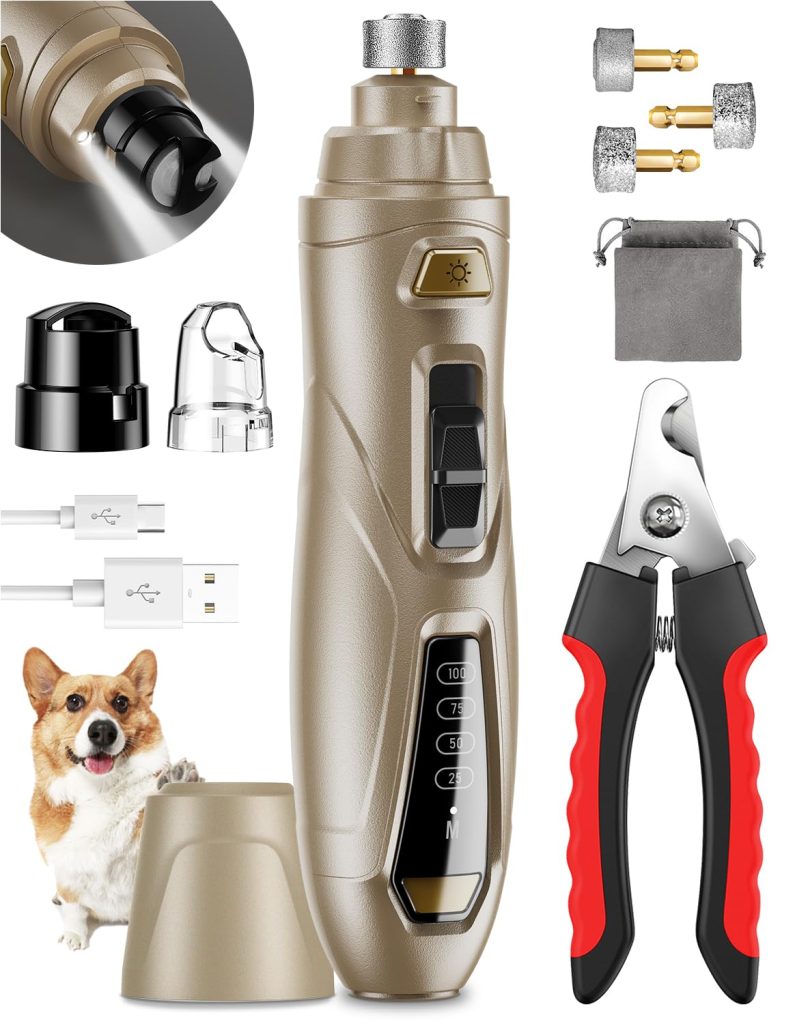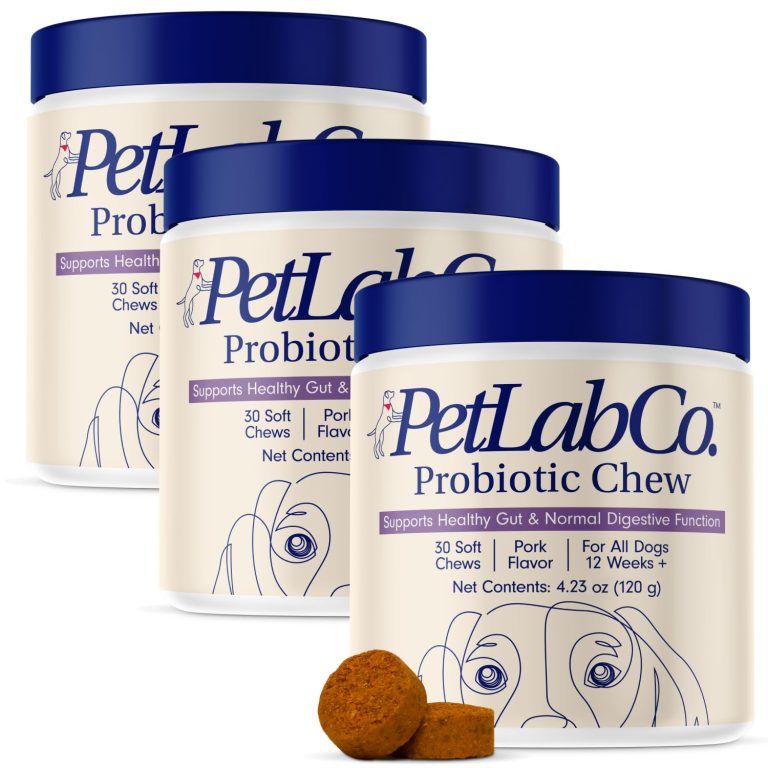Feeding Strategies for High Energy Dogs

High energy dogs, often characterized by their boundless enthusiasm and vigor, necessitate a carefully curated diet that fuels their spirited lifestyle. It is essential for owners to recognize that these dogs have unique feeding needs that differ significantly from their more sedentary counterparts. The cornerstone of their diet must be a balanced formulation, rich in proteins and fats, to provide adequate energy for their intensive physical and mental activities.
An ideal diet for these lively companions comprises high-quality protein sources, such as chicken, beef, or fish, which are instrumental in building and repairing muscle tissue. A general rule of thumb is to seek out dog foods where the protein content—preferably between 25 to 30 percent—comes predominantly from animal sources, as dogs thrive on the amino acids derived from these proteins.
Moreover, alongside protein, healthy fats play a vital role in providing concentrated sources of energy. Ingredients such as fish oil or chicken fat not only deliver essential fatty acids but also support a lustrous coat and overall skin health. Aim for dog food that includes omega-3 and omega-6 fatty acids in the right proportions, as they’re crucial for reducing inflammation and promoting optimal joint health in athletic dogs prone to injury from their aggressive pursuits.
Carbohydrates should not be ignored either; they serve as readily available energy sources. Select complex carbohydrates derived from whole grains like brown rice or oats, as well as vegetables such as sweet potatoes, which provide fiber, vitamins, and minerals. These elements further enhance digestion and ensure healthy energy levels, crucial for high-intensity play and exercise.
Understanding the specific life stage and breed of your high energy dog can also significantly influence dietary choices. Puppies, for instance, require nutrient-dense formulas that promote growth, while adult dogs might need a balance that prevents obesity without sacrificing energy. Tailoring the diet according to these developmental needs ensures that all nutritional requirements are met adequately, avoiding the common pitfalls of obesity, malnourishment, or deficiencies.
For breeds known for their intense energy levels—like border collies, Belgian malinois, or Siberian huskies—an enhanced caloric intake may be necessary, especially during periods of rigorous training or competing events. Consulting with a veterinarian or a canine nutritionist can yield valuable insights into specific caloric needs, which may vary considerably based on activity level and individual metabolism.
As pet owners ponder the possibility of homemade diets for their energetic companions, it is crucial to ensure dietary completeness and balance. Crafting meals at home that encompass protein, carbohydrates, and a rich medley of vegetables can be rewarding but requires education and care. Simple combinations like lean meats mixed with quinoa and a blend of safe vegetables can cater to high energy demands while also offering the nutritional variety that dogs crave.
In summation, catering to the feeding needs of high energy dogs entails a multifaceted approach—emphasizing nutritious ingredients, understanding specific breed and life stage requirements, and, when suitable, providing the option of wholesome homemade meals. By prioritizing these dietary principles, pet owners can nurture their dogs’ vitality, ensuring longevity and overall well-being as they navigate the vibrant world filled with adventure and excitement.
Understanding dog metabolism
To truly grasp the importance of canine nutrition, one must first delve into the intricate workings of dog metabolism, a system that operates uniquely compared to humans. The metabolic processes in dogs govern how they utilize the energy from their diets, directly influencing their vitality and overall health. Unlike humans, dogs possess a more accelerated metabolic rate, allowing them to convert food into energy more quickly, which is particularly vital for high-energy breeds that engage in sustained physical exertion.
A dog’s metabolism is primarily fueled by macronutrients: proteins, fats, and carbohydrates. Proteins are essential as they provide amino acids critical for muscle repair and growth, particularly after particularly active days. That’s further magnified in high-energy dogs, as their muscles undergo considerable stress, demanding a robust supply of quality protein to recover efficiently. Furthermore, it’s crucial to understand that protein metabolism produces nitrogenous waste, which necessitates ample hydration, as well as regular bathroom breaks to maintain urinary health.
Fats, on the other hand, are a dog’s concentrated source of energy, yielding more than double the caloric content per gram compared to proteins and carbohydrates. As such, dietary fats should not be considered a mere supplement to a dog’s diet but rather a fundamental component that fuels sustained activity and supports overall bodily functions. Moreover, the body of a high-energy dog often prefers fat as a primary energy source during prolonged exercise, enabling them to maintain stamina and best execution without the burden of blood sugar fluctuations that can result from heavy carbohydrate consumption.
Understanding that carbohydrates serve not only as an energy source but also as pivotal players in digestion and nutrient absorption is vital for owners. While dogs are omnivores, their carbohydrate requirements are distinctly lower than those of humans. However, the inclusion of high-quality, easily digestible carbohydrates in the diet ensures steady energy levels. Whole grains, as well as vegetables, supply necessary dietary fiber, which is paramount for maintaining gut health and promoting regular bowel movements, thereby enhancing nutrient absorption, a critical aspect for high-energy dogs.
Moreover, it’s noteworthy that a dog’s metabolic response can be influenced by various factors, including age, size, breed, and activity level. Young, growing puppies have higher caloric requirements per pound of body weight than adult dogs, supporting their rapid growth and development. Conversely, senior dogs tend to have slower metabolisms, necessitating adjustments in both portion sizes and caloric density to prevent excessive weight gain that can lead to joint issues and other health concerns.
Furthermore, it’s imperative to address the common dietary pitfalls that can lead to metabolic imbalances in high-energy dogs. Overfeeding or offering low-quality, nutrient-deficient foods can chip away at a dog’s overall health, leading to obesity, digestive issues, and a decline in energy levels. Owners must remain vigilant in monitoring their dog’s condition and activity levels, as changes in behavior can serve as indicators of metabolic distress or dietary inadequacy.
Another important aspect of canine metabolism is how certain foods and nutrients can impact the energy levels and overall health of high-energy dogs. For instance, incorporating antioxidant-rich fruits and vegetables—such as blueberries, spinach, and carrots—can combat oxidative stress from high-intensity exercise. These foods not only provide essential vitamins and minerals but also promote long-term health by bolstering the immune system, which is important for active dogs continually exposed to various environmental challenges.
As the journey into understanding dog metabolism unfolds, one must remain mindful of the broader implications of dietary choices. Each decision made in the realm of nutrition not only fulfills the immediate energy needs of a high-energy dog but also sets the stage for their lifelong well-being. By being attentive and knowledgeable about their specific metabolic requirements and adjusting their diets accordingly, owners can form a foundation for a robust, energetic, and healthy canine companion ready to embrace life with enthusiasm.
Choosing the right dog food
When it comes to selecting the appropriate dog food for high energy dogs, a discerning eye especially important. Navigating the aisles of pet food can be overwhelming due to the sheer variety of options available, but the primary goal should always be to deliver a nutritious and balanced diet capable of sustaining those once-in-a-lifetime bursts of energy. High-quality ingredients should be paramount in the decision-making process, and familiarizing oneself with the first few ingredients listed on the packaging can reveal much about the efficacy of the chosen kibble or wet food.
Look for reputable brands that champion transparency regarding their sourcing and manufacturing practices. An ideal dog food will emphasize whole food ingredients, steering clear of vague fillers that provide little nutritional value. Ingredients derived from sustainable sources should be prioritized, illustrating a higher commitment to quality. Whole meats or meat meals should surface prominently at the top of the ingredient list, ensuring that your dog is receiving essential amino acids required for sustained energy and robust health.
In this endeavor, understanding the distinction between animal by-products and identifiable meat sources is critical. Feeding a dog food that relies heavily on by-products can lead to inconsistencies in nutrition and, potentially, digestive distress. Instead, opt for formulas that articulate clear protein sources, such as deboned chicken or lamb meal, as these provide a more reliable nutrient profile that high-energy dogs desperately need.
Moreover, grain-free diets have gained popularity, yet this trend should be approached with caution. While some dogs may thrive on such a regimen, others may require the steady energy derived from complex carbohydrates found in whole grains. These grains provide the slower-release energy necessary for prolonged activity, viewing them as vital fuel rather than mere fillers. Stepping back to embark upon a personal assessment of your dog’s reaction—both behaviorally and physiologically—after introducing or excluding grains can also lend insights into the best dietary path for your canine companion.
Supplements, particularly those containing glucosamine and chondroitin, can also be advantageous for high-energy dogs prone to joint stress following high-impact exercise. Including fortified dog foods that contain these additions or introducing supplements with a veterinarian’s guidance may enhance joint health and mobility, ensuring your dog remains agile and capable of embracing their lively lifestyle with minimal discomfort.
Furthermore, a suitable dog food must cater to the unique needs of various breeds and life stages. While generic recommendations provide a reasonable starting point, delving deeper into breed-specific formulations can yield vast improvements in overall health and performance. For instance, working breeds, such as Labradors or German Shepherds, often benefit from food that offers higher protein and fat content to meet their rigorous demands, whereas toy breeds would require fortified options geared toward maintaining overall health without undue weight gain.
All these considerations lay the groundwork for the dietary well-being of high-energy dogs. A proactive approach, keeping abreast of nutritional science and its latest developments, can empower owners to make informed decisions on how best to feed their high-energy companions, laying the foundation for a flourishing and exhilarating partnership filled with joyous moments and boundless adventures.
Portion control and meal frequency
Portion control plays a pivotal role in ensuring that high-energy dogs not only meet their caloric requirements but do so in a manner that promotes their overall health and vitality. Striking the right balance can be a delicate dance, particularly as overfeeding can lead to excessive weight gain—a scenario no loving pet owner desires. To avoid this pitfall, it is essential to adhere to the manufacturer’s feeding guidelines while also considering the individual dog’s activity level, age, and metabolism.
When contemplating portion sizes, the first step is to assess the food package for specific recommendations based on the dog’s weight and activity level. A practical strategy involves using a measuring cup to ensure accuracy in meal servings. Consideration should also be given to the dog’s unique personality; some high-energy dogs may become voracious eaters, while others may pick at their food. This variability can necessitate adjustments in portion sizes to ensure that each dog receives the energy required to sustain their active lifestyles without compromising health.
Meal frequency is equally important, and how often dogs are fed throughout the day can influence both their energy levels and behavior. For high-energy dogs, dividing their daily caloric intake into two or three meals can provide a steady supply of nutrients and energy. This approach also aids in minimizing the risk of bloating, which can be a concern for some breeds when large meals are consumed all simultaneously. Furthermore, scheduling regular feeding times can contribute to routine and structure, allowing dogs to anticipate their meals and reducing anxiety.
It’s also crucial to think the timing of meals relative to exercise. Feeding high-energy dogs immediately before or after vigorous activity can lead to discomfort or lethargy. Instead, it is advisable to serve meals at least an hour or two after exercising to facilitate proper digestion and peak performance. Conversely, feeding a meal slightly before an activity can give them the necessary fuel without overwhelming their systems.
Hydration cannot be overlooked during discussions of meal frequency and portion control. High-energy dogs are more susceptible to dehydration, particularly during intense physical exertion. Encouraging regular water intake throughout the day, as well as providing fresh water before and after meals, will help keep their bodies functioning optimally. Be alert to signs of dehydration, such as excessive panting or lethargy, and ensure that clean, accessible water is always available, particularly during periods of vigorous play.
Lastly, keen observation of your dog’s physical condition is essential. Regular weight checks and physical examinations can serve as barometers for success in managing portion control and meal frequency. If your dog appears to be gaining weight, consider redefining portion sizes and adjusting meal frequency accordingly. Conversely, if a dog seems underweight or excessively energetic, it may be time to revisit serving sizes or consult a veterinarian regarding dietary modifications.
In the quest to promote optimal health and performance in high-energy dogs, developing a structured feeding routine that incorporates precise portion control alongside thoughtful meal frequency is a prerequisite for success. With careful planning and vigilant observation, pet owners can ensure their spirited companions are adequately nourished, sustaining the vigor that defines their essence while fostering a lifetime of happiness and health.
Supplementation for active lifestyles
Supplementation emerges as a pivotal aspect of the nutritional strategy for high-energy dogs, particularly those engaged in rigorous physical activities or competitive sports. While a well-rounded diet lays the foundation of health, incorporating specific supplements can significantly enhance overall performance, recovery, and vitality. It is essential, however, to approach supplementation with thoughtfulness, as indiscriminate use may lead to imbalances or adverse effects.
One of the foremost supplements to consider for active canines is Omega-3 fatty acids. These essential fats, primarily derived from sources like fish oil, play a vital role in maintaining joint health and reducing inflammation—both critical for high-energy dogs prone to physical strain. By enhancing their mobility and comfort during and after activities, Omega-3s not only support a more vigorous lifestyle but also contribute to skin and coat health, ensuring your dog’s external appearance mirrors their internal vitality.
Joint health is further bolstered through the inclusion of glucosamine and chondroitin, two compounds renowned for their capacity to support cartilage health and mitigate joint wear and tear. Given the high-impact nature of the activities that such dogs endure, these supplements become invaluable. Regularly integrating glucosamine, either through fortified dog foods or stand-alone supplements, can shield dogs from the detrimental effects of aging and over-exertion, ensuring they remain agile and unburdened by discomfort as they pursue their passions.
Beyond these, antioxidant-rich supplements are increasingly recognized for their potential to combat oxidative stress incurred through heavy physical activity. Active dogs experience elevated levels of oxidative stress due to increased cellular activity during exercise; thus, antioxidants, such as vitamins E and C, can play a protective role. Incorporating colorful fruits and vegetables, like blueberries and spinach, into homemade meals can effectively provide these beneficial compounds, promoting a robust immune response while ensuring long-term health and vigor.
Probiotics should also be emphasized, as they’re crucial for maintaining a healthy gut microbiome. A flourishing gut health foundation enhances nutrient absorption and can mitigate digestive disturbances that high-energy dogs might face due to rapid eating or changes in diet. By integrating probiotics, either through specialized formulations or as natural supplements like plain yogurt, you foster optimal digestive health, empowering your dog’s body to extract the maximum nutritional value from the food consumed—an essential aspect for active lifestyles.
The implementation of supplements should always be tailored to the individual dog’s requirements, considering elements such as age, breed, overall health status, and lifestyle. Conducting consultations with a veterinarian or a canine nutritionist prior to introducing any supplement is imperative, as they can provide guidance on appropriate dosages, potential interactions with existing medications, and specific needs based on the dog’s activity levels.
Moreover, monitoring your dog’s response to supplementation is equally critical. Look for changes in energy levels, coat condition, and overall behavior, which can serve as indicators of the efficacy of the chosen supplements. Adjusting dosages or types of supplements based on these observations will ensure that high-energy dogs are receiving just the right amount of support to thrive without entering the realms of excess.
In essence, supplementation stands as a proactive enhancement to the nutritional regimen of high-energy dogs, complementing a solid foundation of balanced diet choices. By placing emphasis on quality ingredients and targeted supplements, pet owners can optimize the health, performance, and life enjoyment of their beloved companions, fostering an enduring bond built on shared adventures and joyful explorations.







